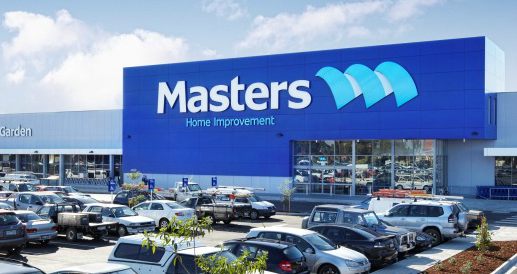
The release of the March 2016 quarter main economic indicators provided mixed economic news for the Federal Government in the midst of an election campaign and keen to promote to voters its economic management credentials. Capital expenditure was reported to have deteriorated in trend terms by double digit amounts; manufacturing sales was also reported to have declined in trend terms by 4.0 per cent and company gross operating profits deteriorated by 6.6 per cent in trend terms as well. The final set of data the release of economic growth figures became the focus of media attention following better than expected headline growth rates showing the Australian economy expanded in trend terms by 0.9 per cent during the March quarter and by 3.2 per cent for the year to March.
While the Federal Government savoured the economic growth numbers a closer look at the data confirms the ongoing economic challenges that the winner of the July 2 elections will face in office.
Growth and sales data for the printing industry once again confirmed continued weakness during the most recent quarter. On the capital expenditure front while the quarterly change represented a modest deterioration, the year on year outcome represented a solid outcome. These main economic indicators for the printing industry will be discussed further in this column.
The good news
Highlight of the March 2016 quarter main economic indicators data was the economic growth data which confirmed that economic growth had returned to trend growth levels as shown by the blue bars in the following chart. The red line depicts the reported change in nominal GDP which is a key influencer of taxation revenue and federal budget repair efforts.
It is clearly evident from the GDP growth Australia chart is that while Trend GDP has started trending up in recent times the opposite has happened in Nominal GDP which is displaying a weakening trend line.
Nominal GDP growth of 2.1 per cent on an annual basis falls significantly below the 2.5 per cent growth rate forecast in the federal budget for financial year 2015-16.
Key drivers of growth
On trend basis the main drivers of economic growth were exports, household final consumption expenditure, investment in dwellings and general government consumption expenditure. Detracting from economic growth was non-dwelling construction investment while investment in machinery and equipment continued to weaken.
Sectors making positive contributions to growth during the quarter included mining, financial and insurance services, and public administration and safety.
At the state and territory level the Australian Capital Territory and New South Wales outperformed the economies of the other jurisdictions with robust reported increases in state final demand. Modest growth were reported in Victoria and Tasmania, flat growth were reported for South Australia and Queensland while Western Australia and Northern Territory reported declining state final demand.
Not so good news
The March 2016 economic growth data confirms that real national disposable income remained flat in trend terms and fell by 1.1 per cent during the year to March 2016. On a per capital basis it fell for the eighth consecutive quarter with the last positive change being recorded during December quarter 2011.
National accounts data confirms that the terms of trade – the price index for exports and imports also deteriorated in seasonally adjusted terms by 1.9 per cent during the March 2016 quarter and by 11.5 per cent for the year to March.
Deteriorating capital expenditure outcomes remain a cause of concern as they continue to act as a drag on economic growth. Another area of emerging economic concern is corporate profits with the national accounts data confirming that the trend for gross operating surplus has fallen to 24.7 per cent of total factor income, the lowest reported level since March 2002 quarter as shown by the accompanying chart.
Developments in printing industry
Weak and deteriorating economic fortunes were also reported for the printing industry with sales, capital expenditure and economic growth data all reported to have deteriorated during the March quarter.
Total printing industry sales deteriorated by 1.5 per cent on trend basis during the March quarter on the previous quarters reported outcome representing the fourth consecutive decline. Compared to the same period a year earlier the reported deterioration stands at 9.0 per cent. For the year to March 2016 the printing industry generated sales totalling $7,152m compared to the $7,578m that was generated for the same period a year earlier. The loss of $426m in sales income over a period of a year means the industry has lost sales that would have supported some 2,029 full time positions.
A decade ago industry sales stood at $9,915m or 38.6 per cent higher than current levels. The decline in industry revenue over the past decade is equal to supporting some 13,157 full time positions.
New capital expenditure declined in the industry during the March quarter by 4.4 per cent bringing to an end the recent improving trend that saw four consecutive quarters of growth. Despite the modest deterioration, the March 2016 outcome is 168.8 per cent higher than the same quarter a year earlier. For the year to March 2016 some $315m worth of new capital expenditure was undertaken in the printing industry representing an improvement of 114.3 per cent.
While the improvement in new capital expenditure is encouraging and surprisingly came ahead of drupa, the recent improvements need to be placed in a historical context as they are still some 44 per cent lower than the high reported two decades ago during the year to September 1995 when new capital expenditure stood at $561m.
The final major economic data release for the printing industry featured economic growth data which showed industry value added declined by 0.5 per cent during the March quarter the fifth consecutive quarter, decline which implies the industry is in a protracted recession. During the year to March the printing industry generated $2,956m in industry gross value added compared to the $3,115m generated for the same period a year earlier – deterioration of 5.1 per cent. Placing the latest economic growth data into some historical perspective, it is worth to note that a decade ago the printing industry generated $5,079m in industry gross value added. Industry gross value added has thus deteriorated by 41.8 per cent in the space of the past decade.
The following pie-chart places the shrinking printing industry gross value added figure in perspective showing how the economic contribution that the printing industry makes to the Australian economy has declined in economic significance compared to a year and decade ago.
Conclusion
The release of the latest main economic indicators data confirm that while the Australian economy is showing signs of returning to trend rates of economic growth, a number of economic challenges persist such as declining capital expenditure, deteriorating company gross profits and terms of trade that if not overcome have the potential to undermine the economic growth momentum and seriously jeopardise the Federal Government’s budget repair plans and overall economic management. Over the next several quarters developments in nominal GDP will be crucial to determine whether the budget forecasts will be fulfilled or not or whether serious measures need to be undertaken post-election.
At the printing industry level all the key economic indicators sustained deteriorations with industry sales and industry gross value added of particular concern. After the recent improving trend new capital expenditure also modestly fell ahead of drupa.
The latest economic data confirms my prediction made three years ago that the printing industry is fast evolving and is on track to become a boutique industry which implies significantly reduced number of industry participants and the redefining of what constitutes the core business of the printing businesses – one that involves less physical production and actual manufacturing activity and instead one that focuses on service, creative communications solutions and greater business and client interface. Printing businesses that are willing and prepared to adapt and evolve with the changing economic times are likely to form viable segments of the emerging industry, while those unwilling or incapable of changing their business models and practices are likely to be swept away by the forces of economic change.
Comment below to have your say on this story.
If you have a news story or tip-off, get in touch at editorial@sprinter.com.au.
Sign up to the Sprinter newsletter

